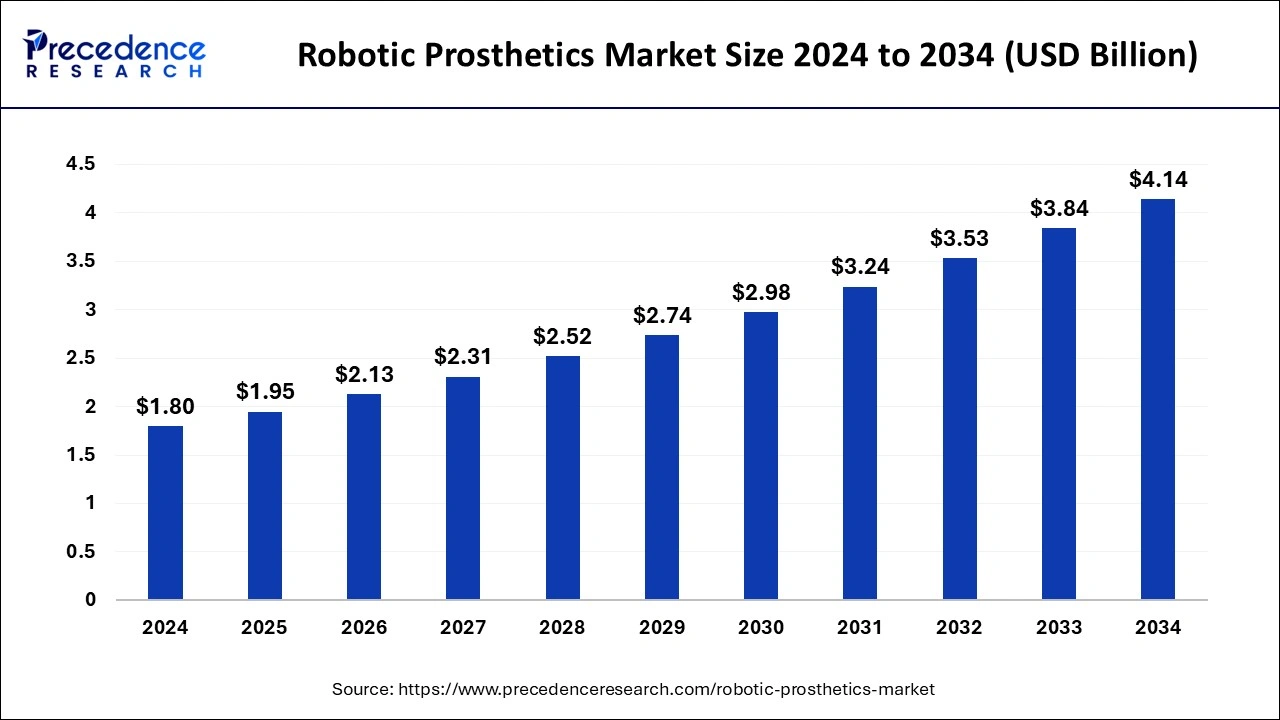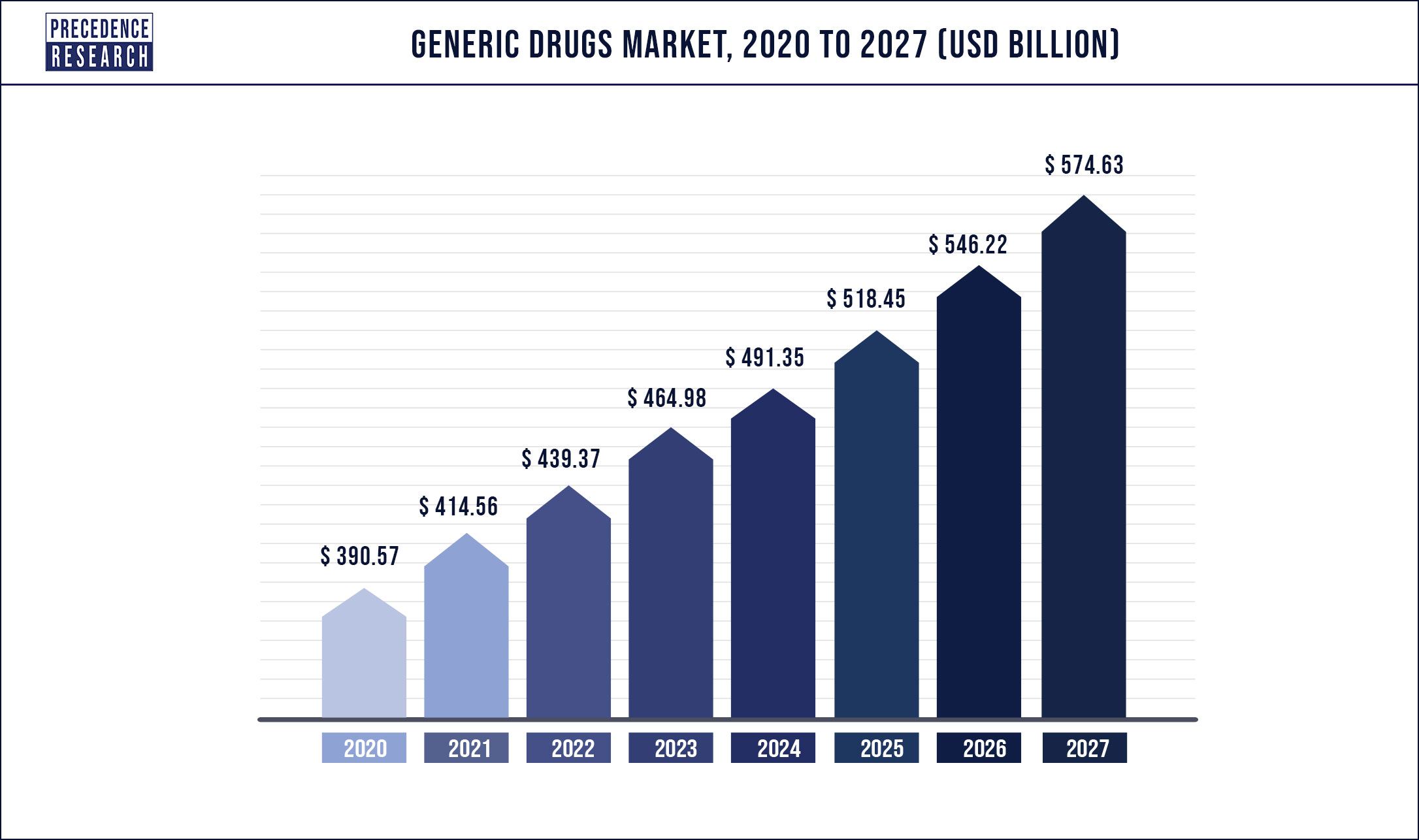The global robotic prosthetics market size was valued at USD 1.65 billion in 2023 and is predicted to reach around USD 3.84 billion by 2033, expanding at a CAGR of 8.82% from 2024 to 2033.
Key Points
- The North America robotic prosthetics market size reached USD 740 million in 2023 and is expected to attain around USD 1,750 million by 2033, poised to grow at a CAGR of 8.98% between 2024 and 2033.
- North America dominated the market with the largest revenue share of 45% in 2023.
- Asia Pacific is expected to grow at the highest CAGR of 10.21% in the market during the forecast period.
- By technology, the microprocessor prosthetics segment has held a major revenue share of 60% in 2023.
- By technology, the myoelectric prosthetics segment is expected to expand at the solid CAGR of 9.7% during the forecast period.
- By extremity, the lower body prosthetics segment has captured more than 58% of revenue share in 2023.
- By extremity, the upper body prosthetics segment is projected to grow at the highest CAGR during the forecast period.
The robotic prosthetics market is rapidly evolving, integrating advanced robotics and artificial intelligence to create more functional and responsive prosthetic limbs. These high-tech devices are designed to closely mimic the natural movement of human limbs, significantly improving the quality of life for amputees. The market encompasses a range of products, including prosthetic arms, legs, hands, and feet, equipped with sensors, microprocessors, and advanced materials that enhance their functionality and durability.
Get a Sample: https://www.precedenceresearch.com/sample/4569
Growth Factors
The primary growth factors driving the robotic prosthetics market include advancements in technology, increased funding for research and development, and rising demand for improved prosthetic solutions among amputees. The growing prevalence of diabetes and vascular diseases, which can lead to limb amputations, also contributes to the market’s expansion. Additionally, heightened awareness about the availability and benefits of robotic prosthetics fuels demand.
Region Insights
North America dominates the robotic prosthetics market, owing to the presence of key market players, advanced healthcare infrastructure, and significant investments in prosthetic technology. Europe follows closely, with robust government support for innovation and a high incidence of limb loss due to accidents and medical conditions. The Asia-Pacific region is expected to witness substantial growth, driven by increasing healthcare expenditure, rising awareness, and improving healthcare facilities in emerging economies like China and India.
Robotic Prosthetics Market Scope
| Report Coverage | Details |
| Market Size by 2033 | USD 3.84 Billion |
| Market Size in 2023 | USD 1.65 Billion |
| Market Size in 2024 | USD 1.80 Billion |
| Market Growth Rate from 2024 to 2033 | CAGR of 8.82% |
| Largest Market | North America |
| Base Year | 2023 |
| Forecast Period | 2024 to 2033 |
| Segments Covered | Technology, Extremity, and Regions |
| Regions Covered | North America, Europe, Asia-Pacific, Latin America, and Middle East & Africa |
Robotic Prosthetics Market Dynamics
Drivers
Key drivers of the market include technological innovations, such as the development of advanced sensors, actuators, and machine learning algorithms that enhance the functionality of prosthetic limbs. Additionally, the rising incidence of accidents, military conflicts, and congenital limb deficiencies contribute to market growth. The supportive regulatory framework and growing investments in healthcare infrastructure also play a crucial role in driving the market.
Opportunities
Significant opportunities in the robotic prosthetics market lie in the integration of cutting-edge technologies like 3D printing, IoT, and AI. These technologies can revolutionize prosthetic design and customization, making devices more accessible and affordable. There is also potential in expanding market reach to developing countries, where the need for affordable and functional prosthetic solutions is high. Collaborations between healthcare providers, research institutions, and technology firms can further drive innovation and market growth.
Challenges
The market faces several challenges, including the high cost of robotic prosthetics, which limits accessibility for many patients. Technical challenges such as device malfunctions, battery life, and the complexity of achieving seamless integration with the human body can also hinder market growth. Additionally, the need for specialized training for both patients and healthcare providers to effectively use and maintain these advanced devices poses a challenge. Ensuring affordability and widespread adoption remains a critical hurdle for the industry.
Read Also: Industrial Starch Market Size to Reach USD 231.63 Bn by 2033
Robotic Prosthetics Market Companies
- Touch Bionics Inc.
- Touch Bionics Limited
- HDT Global
- SynTouch, Inc.
- Artificial Limbs & Appliances
- Ottobock
- Ossur Americas
- Blatchford Group
Recent Developments
- In May 2024, as part of its aspirations to provide clients with an AI-driven experience, ADNOC (Abu Dhabi National Oil Company) of the United Arab Emirates introduced a robotic fuelling arm test project. The robotic arm stretches in the direction of the automobile, unlocks the fuel tank lid, and positions the nozzle to fill it up with the aid of sensors and cameras.
- In May 2024, the artificial intelligence chip business Arm, a part of the SoftBank Group, plans to begin producing chips early in 2019. SoftBank Group CEO Masayoshi Son is attempting to turn the company into a massive AI powerhouse by investing 10 trillion yen, or $64 billion) in this move. Arm, a UK-based company, plans to establish an AI chip branch and produce a prototype by the spring of 2025.
- In February 2024, the International Space Station (ISS) tested a new autonomous robotic arm system from the California-based firm GITAI. On Northrop Grumman’s 20th Commercial Resupply Services (NG-20) mission, a technological development experiment supported by ISS National Laboratory®, the pair of 1.5-meter (4.9-foot) mechanical arms, nicknamed S2, launched to the orbiting laboratory in January.
Segment Covered in the Report
By Technology
- Microprocessor-controlled (MPC) Prosthetics
- Myoelectric Prosthetics
By Extremity
- Lower Body Prosthetics
- Prosthetic Knee
- Prosthetic Ankle
- Others
- Upper Body Prosthetics
- Prosthetic Arm
- Prosthetic Hand
- Others
By Geography
- North America
- Asia Pacific
- Europe
- Latin America
- Middle East & Africa
Contact Us:
Mr. Alex
Sales Manager
Call: +1 9197 992 333
Email: sales@precedenceresearch.com
Web: https://www.precedenceresearch.com
Blog: https://www.expresswebwire.com/
Blog: https://www.uswebwire.com/
Blog: https://www.dailytechbulletin.com/
Blog: https://www.autoindustrybulletin.com/


